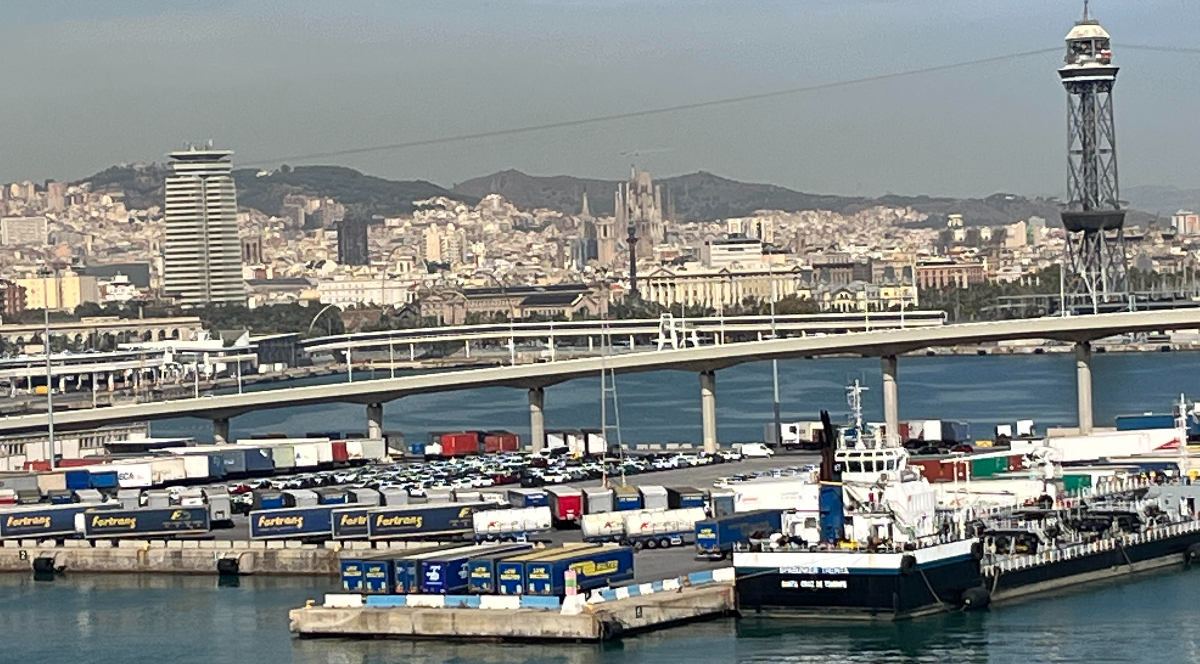
Be a part of every day data updates from CleanTechnica on e mail. Or observe us on Google Data!
If we hope to see a climate-hardy world inside the years to come back again, we should always recast the way in which during which we design our metropolis environments — they should flip into ecologically sound and powerful sustainable areas. Attainable pathways to realize such targets are winding and tenuous, sure, and an array of novel enhancements are wished to make metropolis web zero targets viable. Admittedly, progress in the direction of metropolis decarbonization has been periodically disrupted and influenced by the ever-shifting panorama of native climate change, geopolitical dynamics, and supply chain challenges. However life-changing choices are rising from the native climate tech sector, and these choices can rework cities all through the globe.
With targeted evaluation and progress, native climate tech is offering metropolis planners, architectural engineers, builders, and contractors a option to cope with a viable low-emissions metropolis environment. Actually, clear energy innovation is no longer unusual; metropolis leaders for the time being are capable of ship smart, native climate tech-based choices of their quest to create thriving, adaptable, and vertically built-in cities.
By channeling the flexibility of native climate tech, promoting transformative insurance coverage insurance policies, and welcoming neighborhood enter and protection, metropolis leaders might assist us all to face up to what’s often described an inevitable trajectory earlier the Paris Settlement targets of a 1.5°C temperature enhance. In its place, we’re capable of reimagine our cities as a inexperienced oasis.
Shifting from Burden to Epiphany: Metropolis Amenities & Native climate Tech
Cities are going by explicit and often devasting penalties from the native climate catastrophe – metropolis areas contribute 70% of worldwide CO2 emissions and eat a staggering 75% of the world’s energy. This have an effect on is able to develop ensuing from speedy progress: by 2050, larger than two-thirds of the worldwide inhabitants – spherical 6.5 billion people – will title cities their residence. This will likely place immense strain on sources, demanding way more energy and intensifying metropolis environmental footprints.
What actions can cities take with their burden of CO2 emissions and the massive portions of energy they eat? Metropolis dilemmas surrounding decarbonization aren’t hopeless. Investments are wished to redirect metropolis landscapes in the direction of web zero trajectories. Proper right here’s an abstract of present publications from the Center for Metropolis Transformation on the World Monetary Dialogue board that present some options about cities, energy consumption, and native climate tech.
Native climate tech investments to date: Between 2020 and 2021, native climate tech investments soared to $56 billion. Supportive insurance coverage insurance policies and trendy financing fashions are essential for native climate tech to thrive. Governments and private sector organizations ought to moreover collaborate to create incentives for inexperienced investments and ensure that regulatory frameworks facilitate, reasonably than hinder, sustainable progress. Inside the US, the Inflation Low cost Act has sought to encourage wide-scale funding inside the low carbon energy monetary system, enabling investments in clear know-how to develop by 225% as a lot as $303 billion since its enactment. Due to this, giant strides are being made. In accordance with BNEF, worldwide clear energy financing jumped by 17% to $1.8 trillion in 2023. Within the meantime, funding inside the clear energy present chain reached $135 billion and the electrified transport sector seen an increase in funding of larger than 8% year-on-year.
Cities of the long term and decarbonization: About 60% of the buildings that will exist in 2050 have not been constructed however, so cities have a novel different and accountability to methodology progress in a wiser, further sustainable and further resilient strategy. This suggests establishing applications that will stand as much as future challenges. Specialists estimate that worldwide spending on the transition, along with areas just like retrofitting buildings, might attain $275 trillion between 2021 and 2050. Bridging this funding gap would require game-changing native climate know-how choices to hurry up the decarbonization of our metropolis environments.
Progressive sources for metropolis decarbonization: The pursuit of contemporary clear energy utilized sciences is essential for addressing the native climate catastrophe and attaining sustainability targets. By investing in evaluation, progress and deployment of low-carbon choices, nations can drive monetary progress, enhance energy security and mitigate the impacts of native climate change. To decarbonize, cities ought to moreover embrace trendy establishing provides, photograph voltaic panels, inexperienced roofs, and nature-based native climate utilized sciences. An unlimited companion downside lies in recycling large portions of provides successfully.
New regs spur native climate tech innovation: New guidelines are being utilized across the globe to deal with the environmental have an effect on of constructing provides. That’s compelling builders to chop again their carbon emissions to fulfill establishing necessities. With enough assist and funding from the personal and non-private sectors, native climate tech might help make the world’s cities further sustainable alongside metropolis requirements.
The connection between buildings and embodied carbon: Understanding and addressing embodied carbon – the general GHG emissions generated to produce a establishing’s provides – is crucial. Embodied carbon can account for 80-90% of an precise property developer’s annual emissions nevertheless is often overshadowed by emissions from heating, cooling, and lighting.
What clear tech can do for cities: Apart from enabling the expansion and scalability of promising new sources, innovation might also have a helpful have an effect on on metropolis amenities by enhancing the sustainability of present sources. Current native climate tech enhancements cope with embodied carbon, make reclaimed provides further usable, and adapt inexperienced construction to develop nature-based establishing provides.
Vitality consumption reductions: As outlined inside the IEA’s report on Vitality Experience Views, innovation is significant to the sustainable progress scenario. About 35% of CO2 reductions by 2070 depend on utilized sciences in early ranges, requiring further R&D, whereas one different 40% depend on yet-to-be-deployed utilized sciences. These developments cut back energy consumption and create areas that promote properly being and wellbeing. LEED-certified buildings are designed to be 25-30% further energy-efficient than typical buildings. Tackling the native climate catastrophe necessitates a fundamental reshaping of the current energy framework, a groundbreaking shift that ought to ponder worldwide dependence on present energy sources and infrastructure.
Nature-based constructing provides: Nature-based constructing know-how can significantly decarbonize cities. Integrating biophilic design, which brings elements of nature into metropolis areas, further enhances the usual of metropolis residing. Reclaimed lumber can significantly cut back timber’s carbon footprint and the demand for model spanking new timber. This not solely preserves forests however moreover minimizes waste. A report inside the journal Nature implies that greening merely 35% of the EU’s metropolis areas might cut back CO2 emissions by as rather a lot as 55.8 million tons yearly. Incorporating nature-based establishing provides makes cities further cosy to dwell in, helps clear the air, improves insulation, reduces air air pollution, and encourages ecosystems essential for habitats to thrive.
Remaining Concepts
Navigating the journey within the course of web zero should not be a linear path, the WEF warns. However, amidst this complexity, native climate tech emerges as a “savior” and an important facilitator in helpful useful resource administration. In actuality, native climate tech innovation holds the promise of expediting the processes of decarbonization and energy transition, propelling cities within the course of a sustainable future.
Whereas some nations may be principal the race to develop and scale such cutting-edge choices, the transition to a low-carbon monetary system should not be solely the accountability of explicit particular person nations. It requires collective movement and collaboration on a worldwide scale. Recognizing this actuality, key worldwide policymakers and enterprise leaders are seizing every different to contribute to the expansion of low-carbon native climate utilized sciences.
Chip in a few {{dollars}} a month to help assist neutral cleantech safety that helps to hurry up the cleantech revolution!
Have a tip for CleanTechnica? Want to promote? Want to suggest a customer for our CleanTech Focus on podcast? Contact us proper right here.
Be a part of our every day publication for 15 new cleantech tales a day. Or be part of our weekly one if every day is just too frequent.
CleanTechnica makes use of affiliate hyperlinks. See our protection proper right here.
CleanTechnica’s Comment Protection
